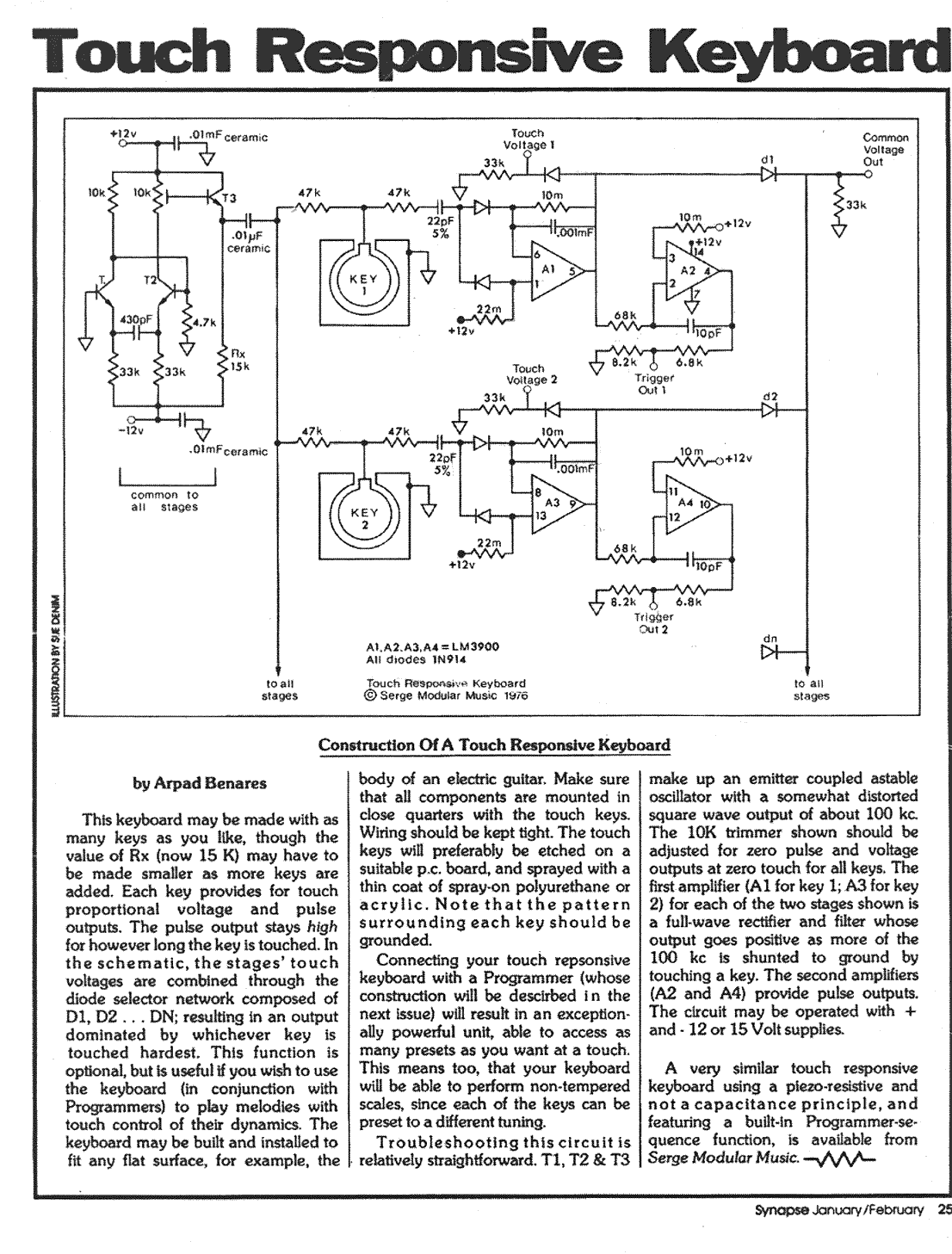Emperor-TK
Well-known member
I'm building a capacitive touch switch according to this article:
http://www.edn.com/article/CA498777.html

The circuit is easy to tune when I'm using a bare lead for the touch plate, but I need to use an insulated touch plate for this application. At the input to IC1B, I get 8.6VDC untouched and 0.4VDC touched, which is well suited to switch states on the Schmitt trigger. However, with a dielectric over my touch switch, I get 8.6VDC untouched and 7.0VDC touched, which won't change states on the Schmitt trigger.
My questions are:
1. Is there anything I can do to get the low voltage (touched) state to be lower without changing the capacitance of my touch switch?
2. I need to trigger some audio samples which are currently triggered by a mechanical switch. My initial thought was to hook up 12v relays to the outputs of IC1B and IC1C. Is there a better way to do this with transistors? The outputs from IC1B and IC1C are 0V in the off state and 12 in the on state.
Thanks,
Chris
http://www.edn.com/article/CA498777.html

The circuit is easy to tune when I'm using a bare lead for the touch plate, but I need to use an insulated touch plate for this application. At the input to IC1B, I get 8.6VDC untouched and 0.4VDC touched, which is well suited to switch states on the Schmitt trigger. However, with a dielectric over my touch switch, I get 8.6VDC untouched and 7.0VDC touched, which won't change states on the Schmitt trigger.
My questions are:
1. Is there anything I can do to get the low voltage (touched) state to be lower without changing the capacitance of my touch switch?
2. I need to trigger some audio samples which are currently triggered by a mechanical switch. My initial thought was to hook up 12v relays to the outputs of IC1B and IC1C. Is there a better way to do this with transistors? The outputs from IC1B and IC1C are 0V in the off state and 12 in the on state.
Thanks,
Chris




